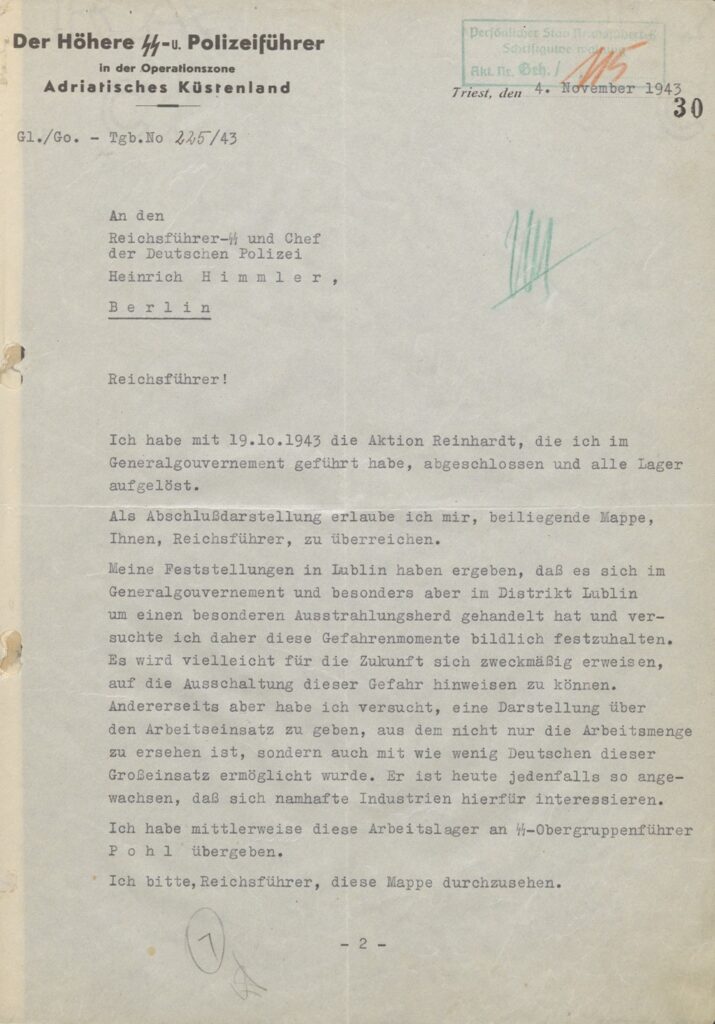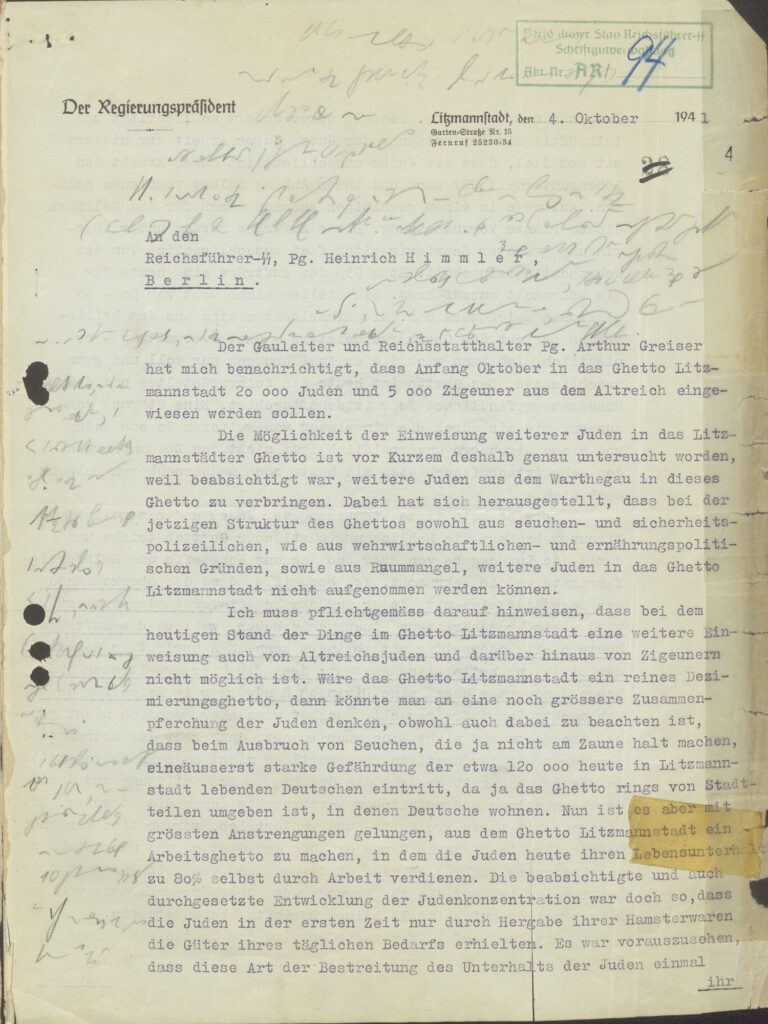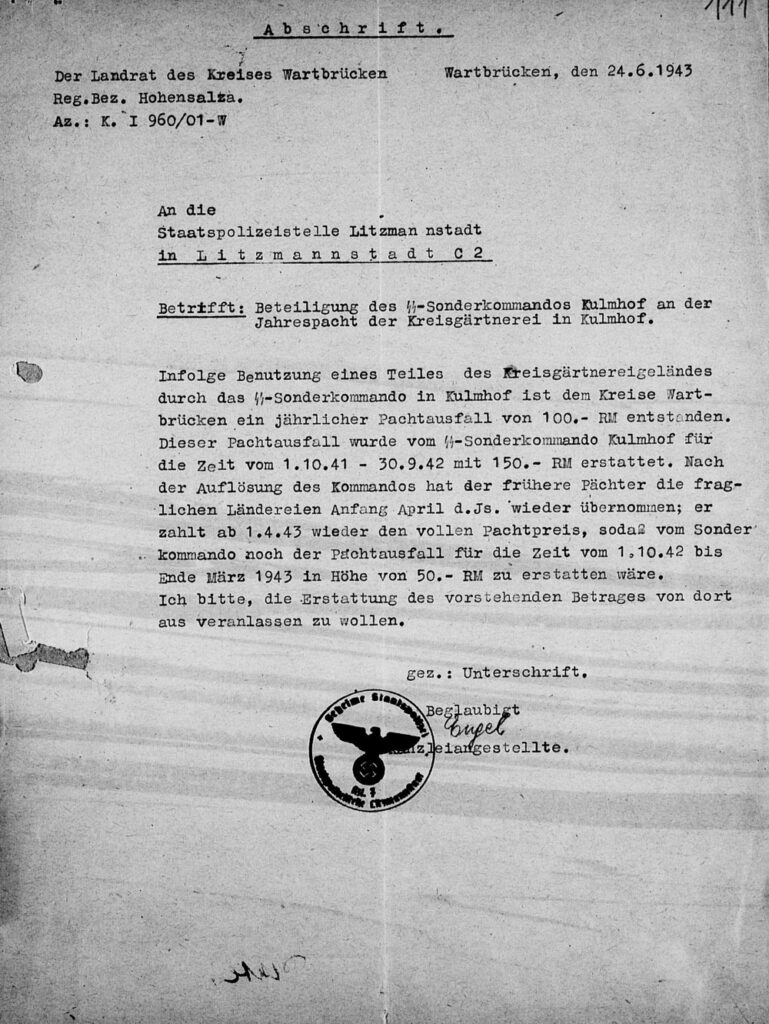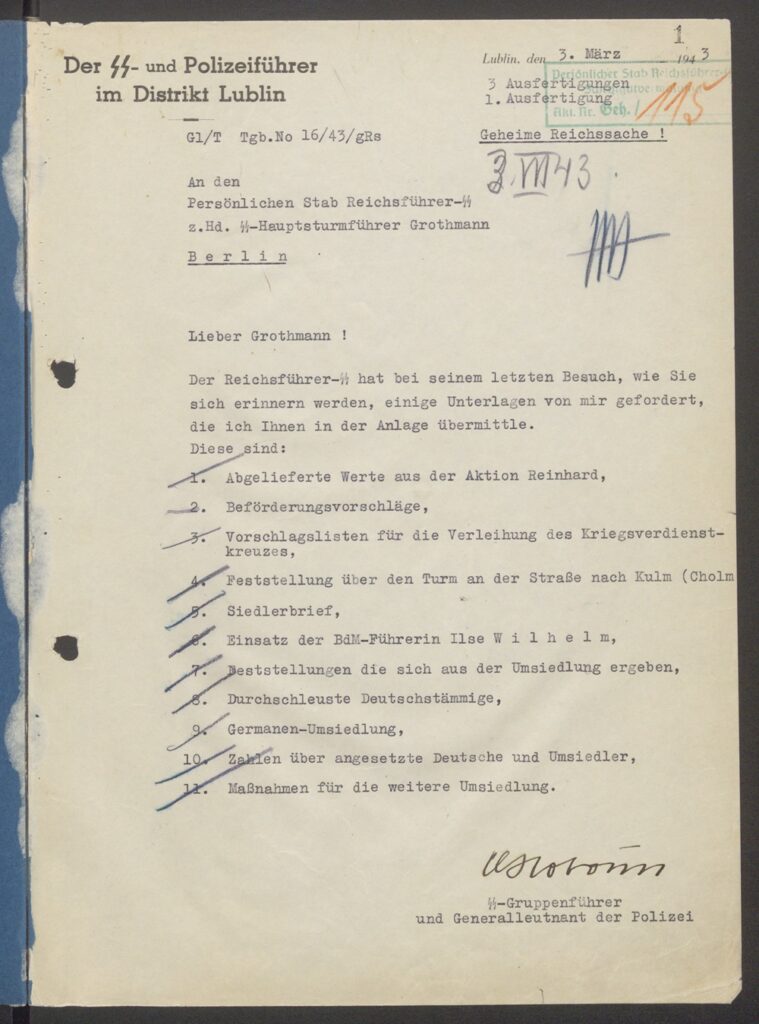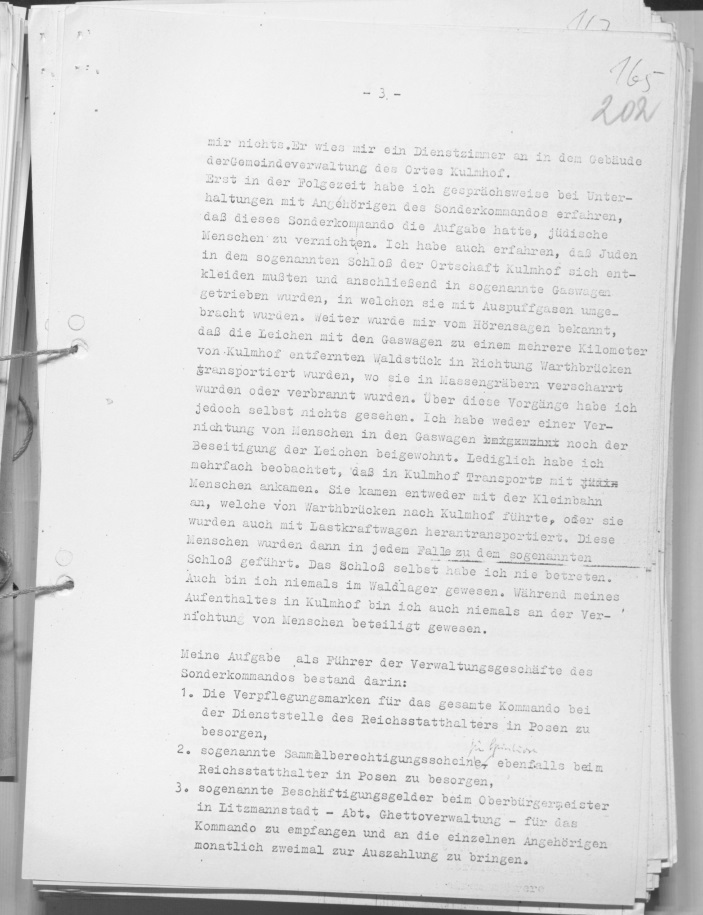1943-11-04 Letter from Globocnik to Himmler on the completion of Aktion Reinhard (Operation Reinhard)
On 4 November 1943, Odilo Globocnik reported to Heinrich Himmler the completion of “Operation Reinhardt, which I led in the General Government, and dissolved all the camps”. Globocnik enclosed a detailed folder and sought approval to propose Iron Cross awards for the “special achievements of this arduous task”.
